Catch an early flight to San Cristóbal Island. Learn about the origins of the Galapagos at the Interpretation Center. Learn about the history of the Galápagos Islands from the very beginning of their volcanic origins through to today’s conservation efforts.
Tour the Human History exhibit to learn about the islands’ discovery and colonization, and discover the natural history and variety of flora and fauna that make the Galápagos so fascinating.
After, visit Tijeretas Hill which bears its name thanks to the frigate birds as “Tijeretas” is how people locally call them. Here we will enjoy from a great view of beautiful landscapes at the foot of a frigate bird nesting colony.



Enjoy the day on Española Island, one of the oldest in the archipelago. Visit the white sandy beach of Gardner Bay's and the bird colonies of Punta Suárez. Arriving at Gardner Bay's in the morning, spend the day exploring on shore and snorkelling at Gardner Island in the bay. After lunch, sail to the western side of the islands to Punta Suárez, known for its amazing bird colonies and home to the waved albatross (April and December).
Visit Gardner Bay's magnificent white sandy beach, home to sea lions and sea birds. Be sure to explore the beautiful turquoise water and its incredible sea life. Spot young sea lions and large schools of surprisingly big tropical fish, including yellow-tailed surgeonfish, king angelfish, and bump-head parrot fish.
Head to Tortuga Rock and Gardner Bay for a spectacular snorkelling experience. Spot playful young sea lions and large schools of tropical fish, including yellow-tailed surgeonfish, king angelfish, and bump-head parrot fish. Look for white-tipped reef sharks napping on the bottom.
In the afternoon visit Punta Suárez, one of most rich wildlife landing sites in the Galápagos. Be greeted by surfing young sea lions on arrival. Head to the trail to find many species of nesting sea birds, and, if lucky, see the waved albatross. Follow the path up to a cliff for great views over the ocean, and watch sea birds gliding in the wind.
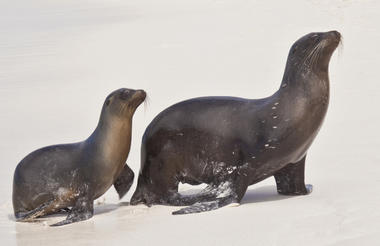
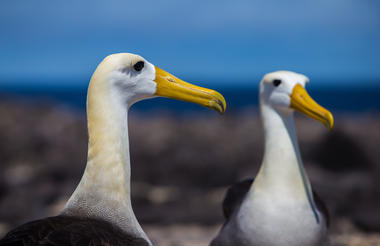
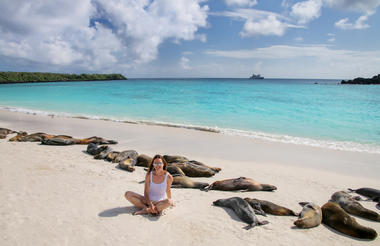
Land at Punta Cormorant on Floreana. Guided walks to observe the bird and wildlife and learn about the natural history. Snorkelling excursion at Champion Islet. Visit Post Office Bay.
Visit Punta Cormorant, the only landing site on Floreana Island, and discover two amazingly different beaches: one with green sand, coloured by olivine crystals, and another with white sand particles known as 'Flour Beach'. Spend the afternoon observing flamingos and other shore birds feeding in the lagoon. Spot penguins and marine iguanas at the water’s edge, and explore the lava tubes with the Galápagos CEO.
Jump on in and get up close and personal with the playful sea lion colony that reside in the waters off this tiny island. Keep an eye out for sea turtles, rays and colourful fish swimming by. There can be currents in this area, this activity should be done by strong swimmers only.
Visit Post Office Bay and learn about its unique history. In the late 18th century, English whaling vessels placed a barrel here to be used as a post office. Today, the box is used mainly by tourists, who may drop off and pick up unstamped letters to be carried to far destinations. Continue the tradition – leave a letter and take one to deliver (be sure it makes it to the correct location)



Breakfast
Lunch
Dinner
Disembark in Puerto Ayora and visit the Charles Darwin Research Station to see the giant Galápagos tortoises. Visit Fausto Llerena Breeding Center a great place to observe many species of tortoises and land iguanas in captivity. Brought back from the brink of extinction, see the famous Galápagos tortoise up close – a corral houses adult tortoises, and a nursery cares for the young until around age three when their shells have hardened. This area also houses the Charles Darwin Research Station, a scientific organization initiated in 1964, which works to preserve the Galápagos' ecosystem through the conservation efforts of scientists, researchers, and volunteers. While the offices themselves are not open to visitors, the research station provides a study location for international scientists and environmental education for the local community. Fly back to mainland from Baltra airport.
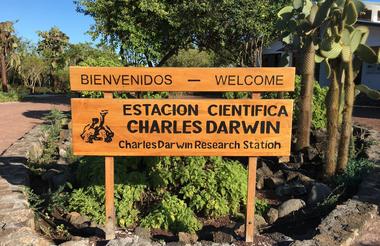
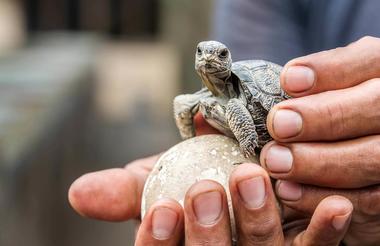
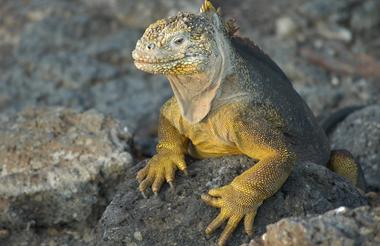
Breakfast








